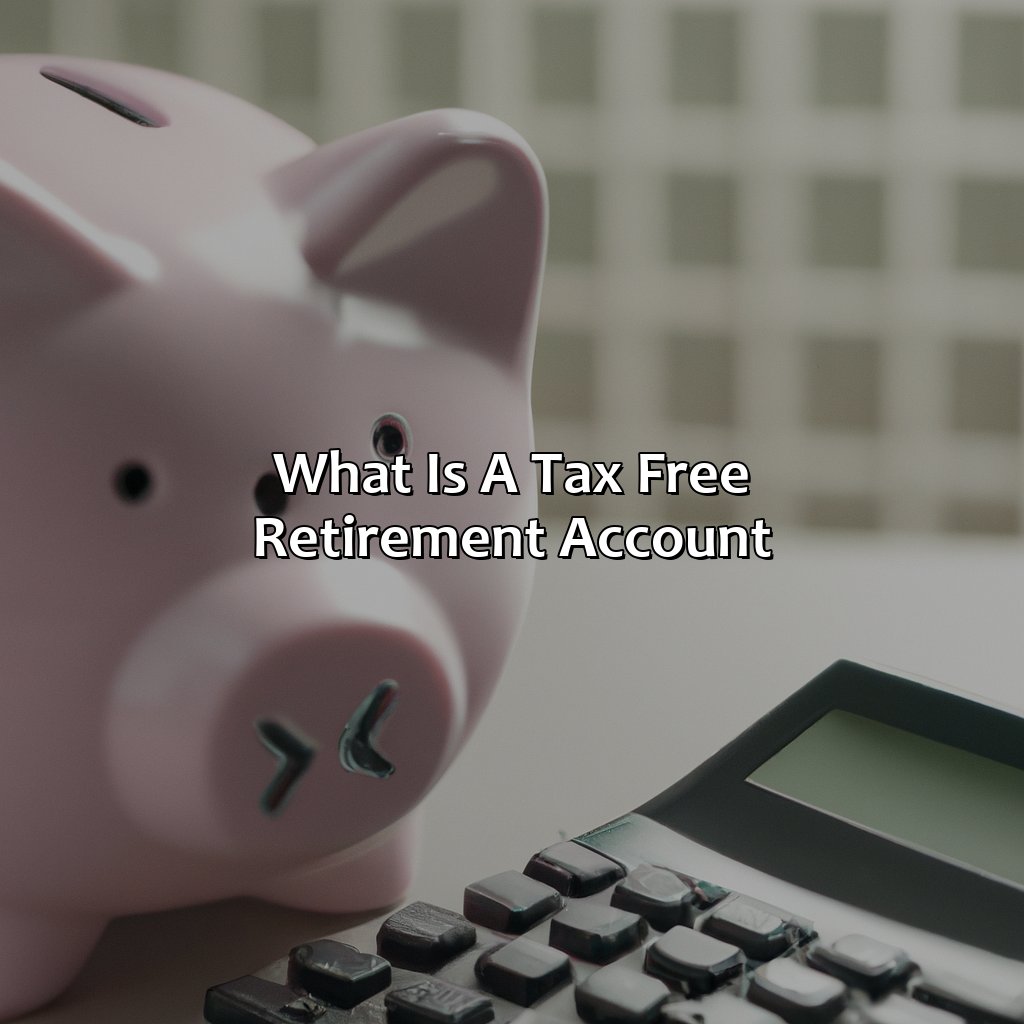What Is A Tax Free Retirement Account?
Key takeaways:
- A tax-free retirement account is a type of investment account where contributions and earnings are not subject to taxes, offering significant long-term benefits for retirement savings.
- There are different types of tax-free retirement accounts, including Roth IRA, Roth 401(k), and Health Savings Accounts (HSAs), each with unique eligibility criteria and contribution limits.
- The benefits of a tax-free retirement account include tax benefits, payout flexibility, and investment opportunities, enabling individuals to maximize their retirement savings while minimizing tax liabilities.
You want to secure your retirement but you’re not sure how? Discover how a tax-free retirement account can help you plan for the future with financial stability. With this article, you’ll learn how to make the most of your retirement savings and ensure financial freedom.
Definition of Tax-Free Retirement Account
A tax-free retirement account is a savings account designed to allow funds to grow tax-free until withdrawal during retirement years. Contributions are made with after-tax dollars, but withdrawals are not taxed, creating a tax-free source of retirement income. Such accounts are popular because they are flexible with no minimum withdrawal requirements and offer an effective way to save for retirement tax-free through investments such as mutual funds and ETFs.
Consider Roth IRAs and 401(k)s, and compare their features and eligibility requirements to choose an account that suits your retirement goals and financial situation. Pro Tip: Regularly review your contributions and investment allocations to achieve optimal portfolio diversity.
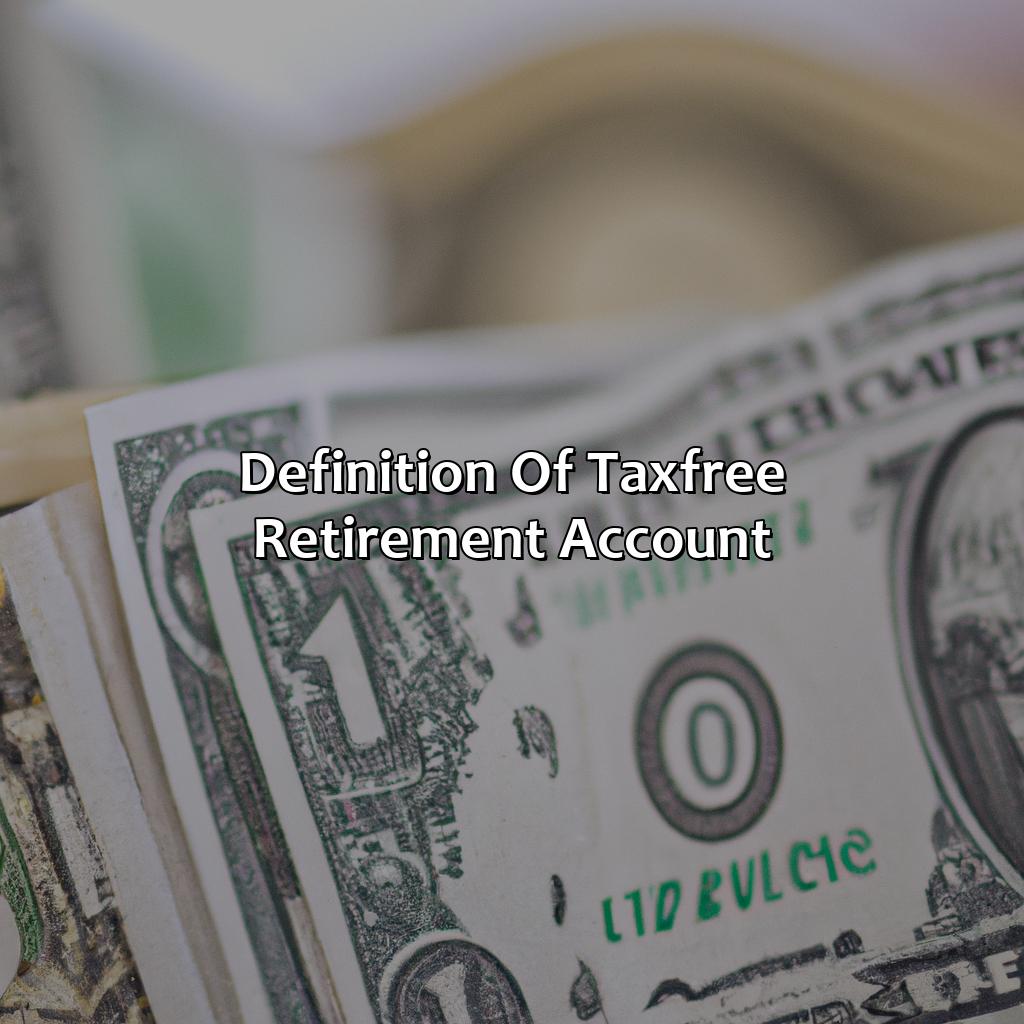
Image credits: retiregenz.com by James Washington
Types of Tax-Free Retirement Accounts
Tax-free retirement planning can be explored in various ways. This section focuses on three types of accounts: Roth IRA, Roth 401(k), and Health Savings Accounts (HSAs).
Benefit from these options and reduce tax payments. Also, maximize saving potentials!
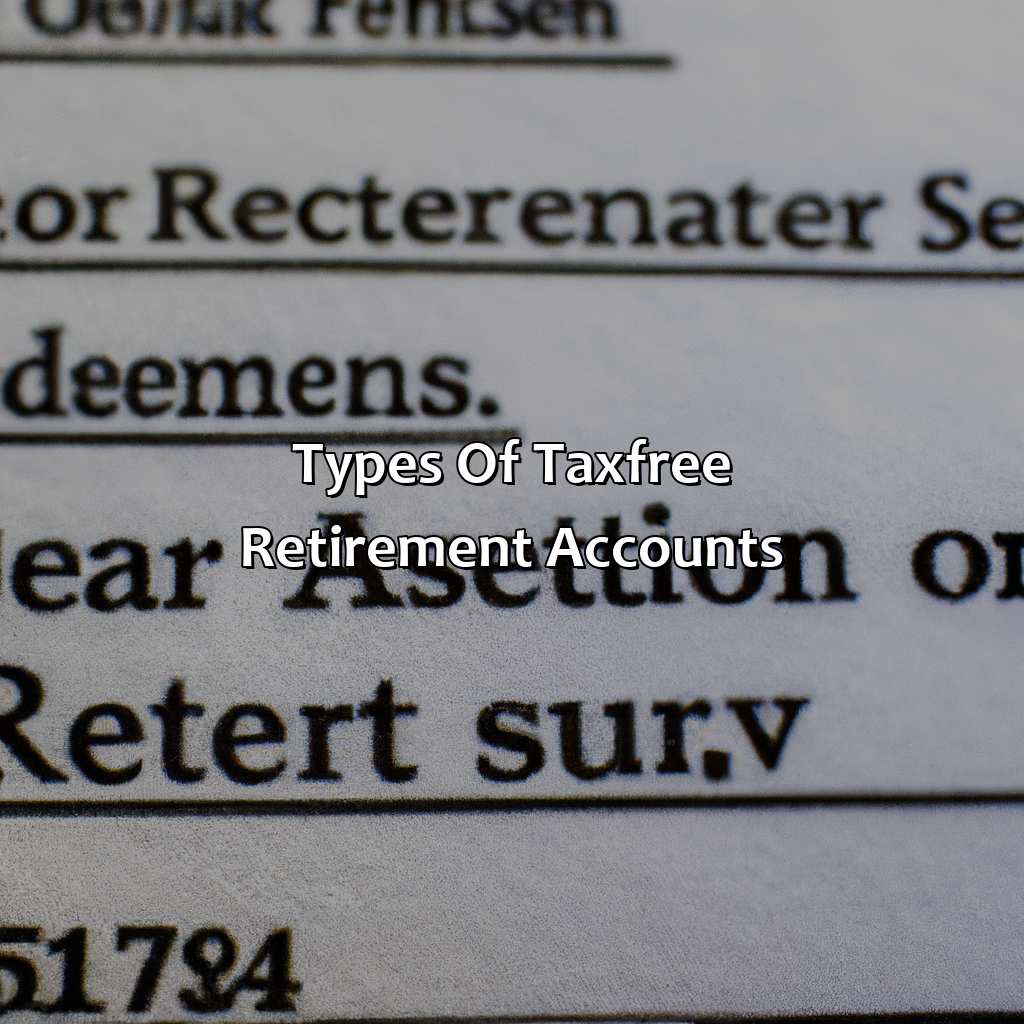
Image credits: retiregenz.com by Joel Duncun
Roth IRA
As a retirement account type, this variant allows investors to make contributions with post-tax income. Roth IRAs offer tax-free growth and withdrawal potential for qualified distributions. Additionally, Roth IRA allows the owner to avoid taking required minimum distributions(RMD) during their lifetime.
With no age limits on contributions and tax benefits, this type of investment offers an excellent opportunity to maximize retirement savings and minimize taxes in the long run. As a bonus, since the gains made in a Roth IRA come out tax-free, investors can sustain more modest withdrawals throughout their golden years.
For those interested in diversifying their portfolio or shielding income from capital gains taxes and inflation risks associated with fluctuating market returns, Roth IRA is an excellent option.
Pro Tip: Consider the potential benefits of converting existing traditional IRAs or 401(k)s into a Roth IRA by consulting with an investment advisor or tax professional.
The Roth 401(k): Because who doesn’t love tax-free growth and the satisfaction of sticking it to the IRS?
Roth 401(k)
The tax-free retirement account variant known as ‘after-tax 401(k)’ is what Roth 401(k) represents. This adds the option of paying taxes now on contributions, resulting in a tax-free distribution in the future.
- Unlike traditional 401(k), you are taxed at contribution and not distribution.
- Withdrawals happen without penalty by the holder being over 59 and a half or because of disability or death.
- The Roth 401(k) rules prevent owners from needing to begin distributions post-turning age seventy and a half.
- Roth 401(k) also caters to high-income earners, who cannot make contributions to Roth IRA accounts.
- You can rollover funds from an In-plan employer plan to a designated Roth account entirely.
- Similar to all other retirement accounts, there might be transaction fees and investment charges that must be taken into consideration.
Roth 401(k)s have similar regulations and rules like traditional ones but come with lowered tax expenditures on your money.
There is one thing Chris never could comprehend – despite an excellent retirement contribution plan, his pension funds had run out before even retiring. His colleague advised him about using Roth 401(k). It has been nine years since making the shift, but he hasn’t ceased praising its effectiveness as his year-by-year distributions remain remarkable.
Stock up on bandaids and aspirins, because with Health Savings Accounts, your wallet won’t feel the pain of medical bills.
Health Savings Accounts (HSAs)
Investing in a tax-advantaged retirement account can be a smart move for your financial future. One such type of account is HSA or Health Savings Accounts, which allows individuals to set aside pre-tax funds for medical expenses.
Not only do HSAs provide tax savings on contributions and additional interest growth, but they also offer flexibility in terms of usage. Funds in an HSA can be rolled over year-to-year indefinitely and can even be used to pay for long-term care premiums.
Another advantage of HSAs is that the account holder owns the funds and decides how to invest them. They are not tied to any insurance plan or employer, so you have control over your health expenses.
In order to maximize the benefits of an HSA, it’s important to contribute regularly, utilize the available investment options, and file claims only when required. By following these recommendations, you can make the most out of your tax-free retirement account.
Saving money for retirement is like investing in a future you won’t even be around to enjoy, but a tax-free retirement account makes it a little more worth it.
Benefits of a Tax-Free Retirement Account
Grasp the advantages of a tax-free retirement account.
- Unlock the tax benefits.
- Be flexible with your payouts.
- Gain from investment possibilities.
These sub-sections can help you manage your funds.
- Benefit from smart tax policies.
- Enjoy flexible payout options.
- Take advantage of investment opportunities.
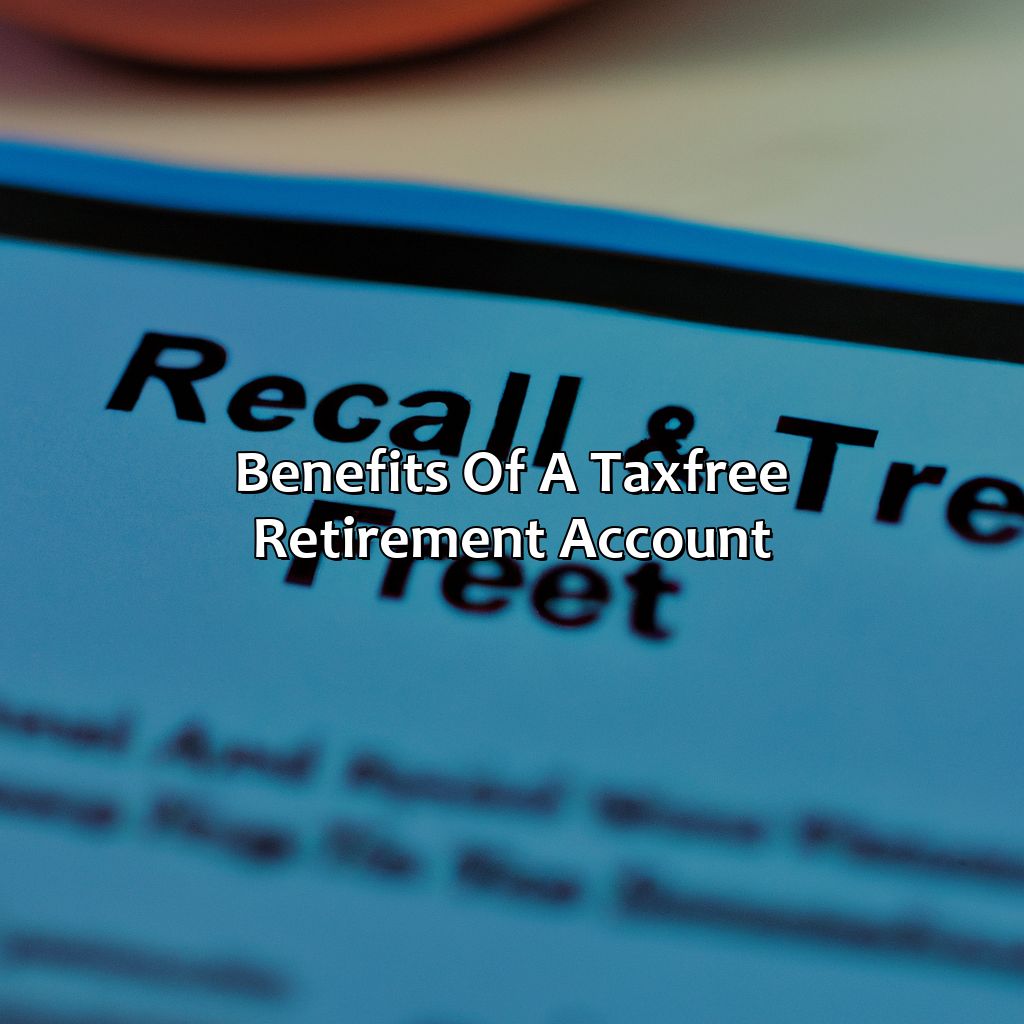
Image credits: retiregenz.com by Harry Duncun
Tax Benefits
For those planning for retirement, a Tax-Free Retirement Account offers numerous benefits. One of the most significant is avoiding taxes on withdrawals during retirement, allowing individuals to keep more of their hard-earned savings. This can result in substantial savings in the long run.
In addition to tax-free withdrawals, contributions made to these accounts are also tax-deductible, meaning individuals can reduce their current taxable income while simultaneously saving for retirement. Additionally, these accounts often offer greater flexibility and control over investments compared to traditional retirement accounts.
Furthermore, these accounts can provide peace of mind and financial security during retirement by ensuring that individuals have access to tax-free funds when they need them. Overall, a Tax-Free Retirement Account is a valuable tool for anyone looking to plan for a comfortable and financially secure future.
Don’t miss out on the benefits of a Tax-Free Retirement Account. Start planning now to ensure you have the financial stability you need in your golden years. With tax-free withdrawals and contributions, greater investment flexibility and control, and peace of mind, this type of account is an essential part of any successful retirement plan. Having payout flexibility in your tax-free retirement account is like having a Swiss Army knife – it’s versatile, efficient, and can get you out of a financial bind in a pinch.
Payout Flexibility
This feature allows for a flexible method of receiving payments from the account. Tax-free retirement accounts provide great payout flexibility to individuals who want to withdraw money from their retirement savings. You can choose how much and how often you want to withdraw, allowing you to customize your income stream according to your needs.
Moreover, tax-free retirement account holders have a range of options when it comes to payout flexibility. Some providers offer fixed or variable annuities, while others offer access to mutual funds or exchange-traded funds (ETFs) that can be sold off as needed. This gives the individual greater control over their investment and the ability to manage their finances in a well-organized manner.
It’s important to note that different tax-free retirement plans may vary in terms of payout flexibility. Some plans may require minimum distributions at certain ages, while others provide more freedom in terms of withdrawals. Therefore, it is recommended that you read through your plan’s terms and conditions before choosing one.
In fact, back in 2015, the IRS issued an announcement stating that they would be updating their life expectancy and distribution tables for 401(k)s and IRAs. The aim was to reflect increasing lifespans and encourage account holders to withdraw funds over longer periods instead of quickly depleting them. This change advanced payout flexibility by enabling individuals more time to benefit from their savings while still managing their finances effectively.
Better invest in stocks now than regret it later when you’re eating cat food in retirement.
Investment Opportunities
The world of investments offers diverse opportunities to achieve financial goals, including maximizing returns and minimizing taxes. Exploring various investment types can help investors fully benefit from their accounts’ tax-advantageous features.
A wide range of investment vehicles, such as individual retirement accounts (IRAs), Roth IRAs, 401(k)s, annuities, and other similar accounts, offer investors attractive tax advantages that vary based on account features.
In addition to the common features in investment options such as capital gains deferral, diversified portfolios with access to different investment markets without immediate taxation are essential.
Investing in a tax-free retirement account enables an investor to accumulate funds faster because interest earned is not taxed. The investor has control over contributions and allocations made towards their account until it generates income at distribution. Thus, it’s profitable as this avenue helps grow one’s wealth efficiently while avoiding tax implications whilst still legally.
For instance, a couple invested $12k/annually for ten years in a normal taxable account projected to return an average of 7% annually yielding $174k before taxes with no compound interests. However, if the same amount for ten years were invested through a Roth IRA projected to return the same average rate annually, they would earn approximately $214k after taxes opposed to zero profit realization in a taxable account respectively.
Additionally opting for an IRA could be advantageous for individuals who may want more contribution limits or desire greater flexibility than an attractive plan offered by their employers if any.
Want to avoid the retirement taxman? A tax-free retirement account is the perfect solution for anyone who wants to keep their golden years golden.
Who Can Benefit from a Tax-Free Retirement Account?
In order to build a comfortable retirement fund, a tax-free retirement account is an option that can prove to be beneficial for individuals who are looking for a way to receive tax-free withdrawals in the future. This type of account can be utilized by anyone who wants to secure tax-free growth, taking advantage of Roth IRAs or Roth 401(k)s. By contributing with after-tax dollars, the earnings will accumulate with no taxation during withdrawal. This type of account can also be useful for those who are expecting their tax bracket to increase in the future. Overall, a tax-free retirement account is a great option for anyone looking to have a more secure and comfortable retirement.
Additionally, it is important to note that not only individuals can benefit from a tax-free retirement account, but also small business owners, who can create a tax-free retirement account for their employees. By offering tax-free retirement accounts as part of employee benefits, businesses can provide their employees with a valuable asset for their future, which fosters employee loyalty and retention.
Pro Tip: It is important to consult with a financial advisor to determine whether a tax-free retirement account is the right option based on an individual’s unique financial situation and retirement goals.
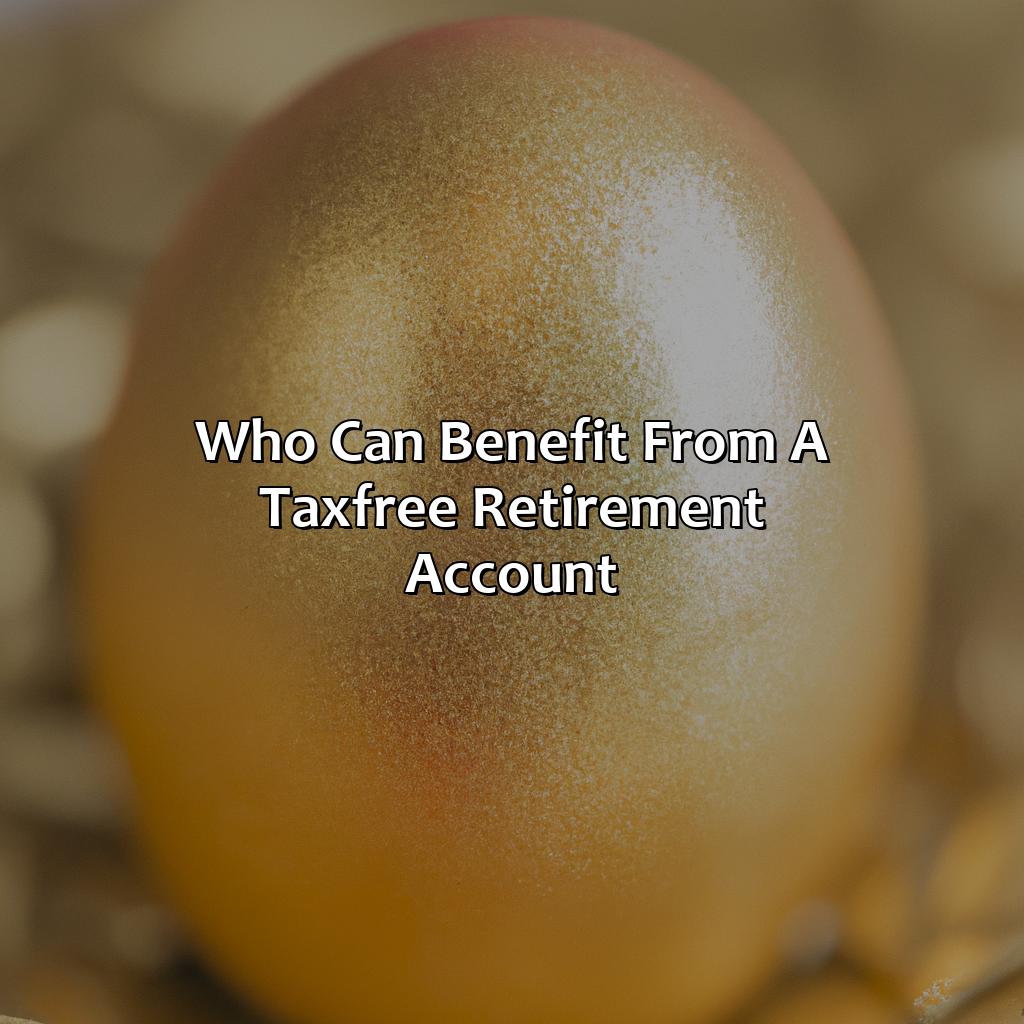
Image credits: retiregenz.com by David Arnold
Eligibility for Tax-Free Retirement Accounts
In order to achieve a tax-free retirement, it is important to understand the eligibility criteria for investment in such accounts. Tax-free retirement accounts are available to individuals who meet certain requirements, such as the age limit and income level. These accounts are not limited to traditional pensions or 401(k)s, but also include Roth IRAs and Health Savings Accounts.
Additionally, contributing to a tax-free retirement account can bring various benefits beyond just the tax savings. These accounts can also provide a higher level of control over retirement savings, as well as offer a wider range of investment options.
It’s important to keep in mind that eligibility criteria for tax-free retirement accounts may vary depending on the type of account. Therefore, individuals must do their research and consult with a financial advisor to determine their eligibility before making any contributions. By taking advantage of these accounts and contributing to them regularly, individuals can secure a more comfortable retirement while avoiding unnecessary taxes.
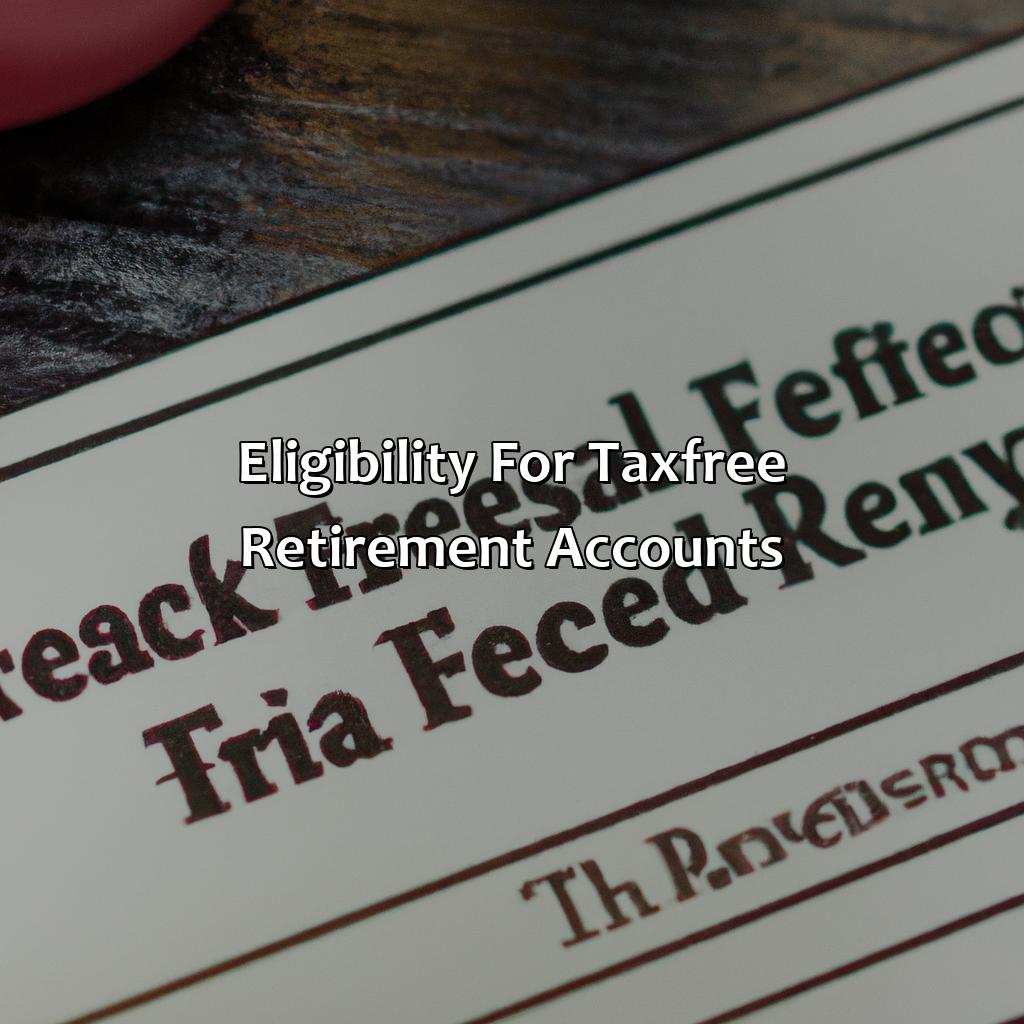
Image credits: retiregenz.com by Adam Arnold
How to Open a Tax-Free Retirement Account
Opening a tax-free retirement account can be a great way to save for your future. Here’s how you can do it:
- Determine which type of tax-free retirement account is right for you, such as a Roth IRA or a 401(k).
- Choose a financial institution that offers the type of account you want to open.
- Complete the necessary paperwork to open the account, which may include providing personal information and designating beneficiaries.
- Begin contributing to the account, either through automatic payroll deductions or by making regular contributions yourself.
It’s important to note that there may be annual contribution limits for tax-free retirement accounts, so be sure to check the current limits before contributing.
When considering which type of account to open, it can be helpful to speak with a financial advisor who can guide you based on your individual financial situation.
One success story is that of a couple who utilized a Roth IRA to save for retirement, and were able to retire comfortably with enough savings to travel and enjoy their golden years.
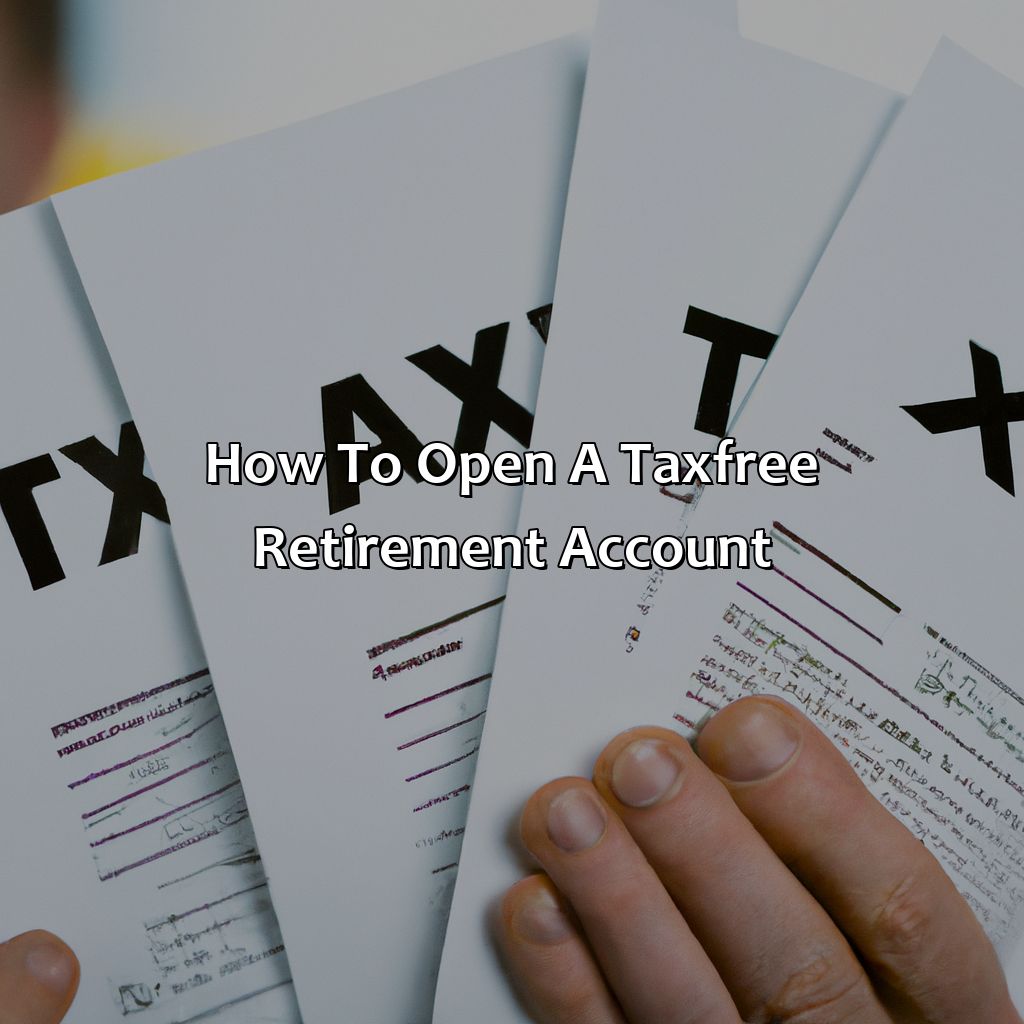
Image credits: retiregenz.com by Joel Washington
Five Facts About Tax Free Retirement Accounts:
- ✅ A tax free retirement account allows individuals to save for retirement while avoiding taxes on their contributions and earnings. (Source: The Balance)
- ✅ Two common types of tax free retirement accounts are Roth IRAs and Roth 401(k)s. (Source: NerdWallet)
- ✅ Contributions to tax free retirement accounts are limited each year, with higher limits for those over the age of 50. (Source: IRS)
- ✅ Tax free retirement accounts offer an alternative to traditional retirement accounts, which allow for tax-deferred contributions but require taxes to be paid on distributions. (Source: Forbes)
- ✅ Tax free retirement accounts can be a smart choice for individuals who expect to be in a higher tax bracket during retirement than they are currently. (Source: MoneyTalksNews)
FAQs about What Is A Tax Free Retirement Account?
What is a tax free retirement account?
A tax free retirement account is a type of investment account that allows individuals to save for retirement without having to pay taxes on the earnings or withdrawals.
What are the types of tax free retirement accounts?
The most common types of tax free retirement accounts are Roth IRAs, Roth 401(k)s, and Health Savings Accounts (HSAs).
How much can I contribute to a tax free retirement account?
The contribution limits for tax free retirement accounts vary depending on the type of account and the age of the account holder. For example, the 2021 contribution limit for a Roth IRA is $6,000 for individuals under the age of 50 and $7,000 for individuals 50 and older.
Can I withdraw money from a tax free retirement account before retirement?
Yes, you can withdraw money from a tax free retirement account before retirement, but you may be subject to taxes and penalties. Some exceptions to early withdrawal penalties include first-time home purchases and certain medical expenses.
Is a tax free retirement account right for me?
Whether a tax free retirement account is right for you depends on a variety of factors, such as your income, tax bracket, and retirement goals. It is important to speak with a financial advisor to determine the best retirement savings plan for your individual needs.
What are the benefits of a tax free retirement account?
The main benefit of a tax free retirement account is that it allows individuals to save money for retirement without having to pay taxes on the earnings or withdrawals. This can result in significant long-term savings and provide a more financially secure retirement.
